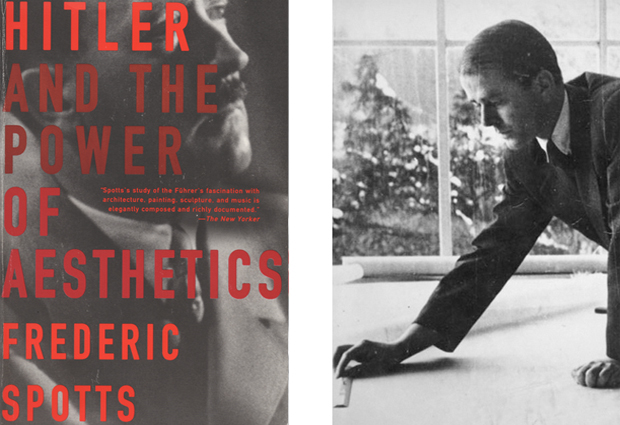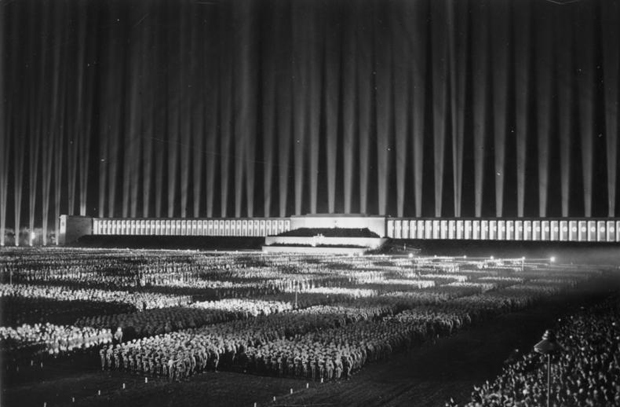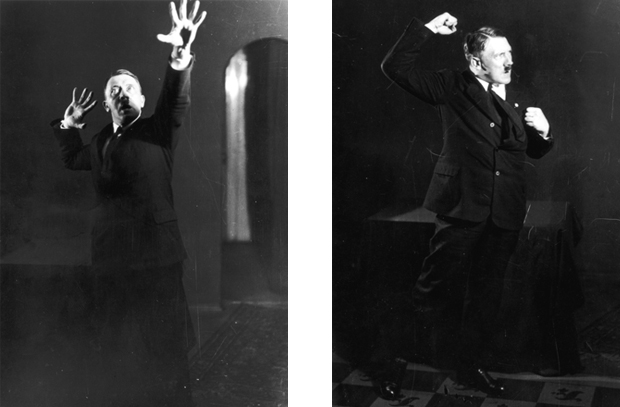
|
|
|
In recent years there has been a trend in popular culture to humanize Adolf Hitler. This revisionism is important, I think, in order to understand, and come to terms with, the ethos of National Socialism and the horrors of the Holocaust. The 2004 movie Downfall and, more recently, Frederic Spotts's book Hitler and the Power of Aesthetics have attempted to shine new light on Hitler’s persona. Spotts’ book is fascinating, discussing the cultural aspects of Nazism as well as Hitler’s love of painting Wagnerian opera and his skill as an architect and even as a performer. If only the Vienna Academy Of Fine Arts had taken on Hitler as a student then perhaps we would live in a very different world! It's possible to argue that the horrors of the Holocaust were a direct result of Hitler's rejection from art school and Hitler's failure as an artist. One thing that blows my mind is the fact that this book will not be published in Germany. How long can Germany bury its head in the sand? This is a book of great cultural importance, in my opinion, and should not be sanctioned. Germany’s denial of this subject is on a par with its refusal to confront the atrocities of the Holocaust. Surely a time will come where the subject of the Third Reich is not what Robert Hughes called “radioactive”. The fact that Hitler could have been a civil human being with typical human traits seems shocking to many people. The truth is that Hitler revered the arts above all else and his biggest ambition was to create a state of high culture after the war. But at what a cost! Such a Utopia is obviously not worth a bloody war and the lives of six million people. Ultimately Hitler's infatuation with, and dictatorship of, the arts killed off Europe as the world's cultural centre. Perhaps the most persuasive element of National Socialism is the Swastika symbol which was used incredibly effectively by Propaganda Minister Joseph Goebbels. It is a symbol that in the early days of the Nazi Party certainly symbolised and instigated change. Goebbels understood the power of indoctrination and it is arguable that the Swastika was the 20th century's first successful brand image. The term "branding" sends shivers up my spine and I believe that advertisers and designers are given far too much credit for what is basically "keeping everything the same". The Nazi's were one of the first organisations to produce a graphic standards manual detailing how all visual elements should be displayed. Obviously it was very partisan, but it is endlessly fascinating to me and without question a pre-cursor to the advertising boom of the Eighties. The current Mythos Germania exhibit in Berlin reveals the proposed regeneration of the city at the end of the war as well as Hitler's megalomania. Having seen the exhibition, it is easy to understand Albert Speer's father's quote, "You've all gone completely insane!" However, there is little left of Hitler’s Berlin. The Olympic Stadium has been refurbished and the swastikas filled in with plaster. Tempelhof airport is soon to be closed. The Reich Chancellery Building was flattened four years after the war (but the marble from the reception hall is in use, to this day, at Karl Marx Platz U-Bahn station). The Führerbunker still exists, buried underground. In its place stands a nondescript apartment block, a Chinese take-away, and a supermarket where I used to buy groceries. It really is crazy to think that this is all there is to show of Hitler’s grandiose schemes. A few ruins and some architectural models... The aesthetics of Nazism are like a fleeting curse that blew in on an evil wind. Virtually everything that the Nazi's created has been destroyed. It is rather perplexing that the best of their visual work, such as Speer's undoubtedly beautiful Cathedral of Light used to illuminate the Nuremberg Rallies was transitory and purely ephemeral. The Nazi legacy is one of destruction and ultimate failure. It would take a fool to not be impressed by their grandiose plans, but there is little doubt that the re-modelling of Germany's major cities was not worth the price of six million lives. The ethics, and aesthetics, of Nazism do not equate to a state of high culture but it is something that is best not forgotten. |
|








